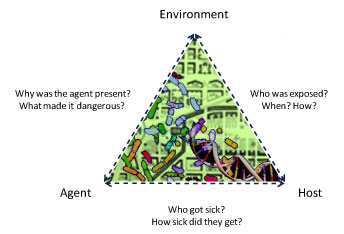Contagion, catastrophe, even “zombie apocalypse”— whatever the threat, an all hazards approach goes a long way toward protecting individuals and communities. But besides delivering broad-spectrum medical and technical support, the public health system has to be ready to investigate. Public health sciences help keep “better safe than sorry” from becoming “better luck next time” by building the capacity to anticipate, detect, prevent, and respond to future threats. That’s the essence of preparedness—and genomics is part of the toolkit.
Selected Category: investigation
Genomics in Public Health Preparedness: Chance Favors the Prepared Mind
Categories: genomics, investigation
September 22nd, 2011 4:48 pm ET - Marta Gwinn, Consultant, McKing Consulting Corp, Office of Public Health Genomics, Centers for Disease Control and Prevention
Genome vs. Genome: E. Coli Sprouts in Germany
Categories: genomics, investigation
June 30th, 2011 11:37 am ET - Marta Gwinn, Consultant, McKing Consulting Corp, Office of Public Health Genomics, Centers for Disease Control and Prevention
Public health officials around the world are watching what they hope is the final stage of a massive outbreak of Shiga toxin-producing Escherichia coli (STEC) infections that began in Germany in May.
On June 10, officials of the German federal disease control center, the Robert Koch Institut, announced that raw vegetable sprouts were indeed the culprit in the outbreak that has sickened thousands of people and caused more than 30 deaths. They made the case using good old-fashioned shoe-leather epidemiology: a “recipe-based restaurant cohort study,” which found that people who ate sprouts were nearly nine times more likely to become infected than those who didn’t. Cucumbers, tomatoes, and lettuce—fingered early on as likely suspects—were all exonerated.
In an interview on National Public Radio’s All Things Considered news program, CDC Director Dr. Tom Frieden stated that the evidence implicating sprouts doesn’t constitute proof that they caused the outbreak. The “smoking gun,” he said, is DNA analysis proving that the bacteria isolated from sick people and the likely source are identical. Of the many environmental samples tested in the outbreak investigation so far, only one has yielded a match: an opened bag of sprouts in the garbage can at the home of two infected people. On the radio, Dr. Frieden confided that he gave up eating sprouts years ago, after becoming ill in India from sprouted seeds he had brought with him from the U.S.
About this Blog
Contact Us:
- Centers for Disease Control and Prevention
1600 Clifton Rd
Atlanta, GA 30333 - 800-CDC-INFO
(800-232-4636)
TTY: (888) 232-6348 - cdcinfo@cdc.gov


